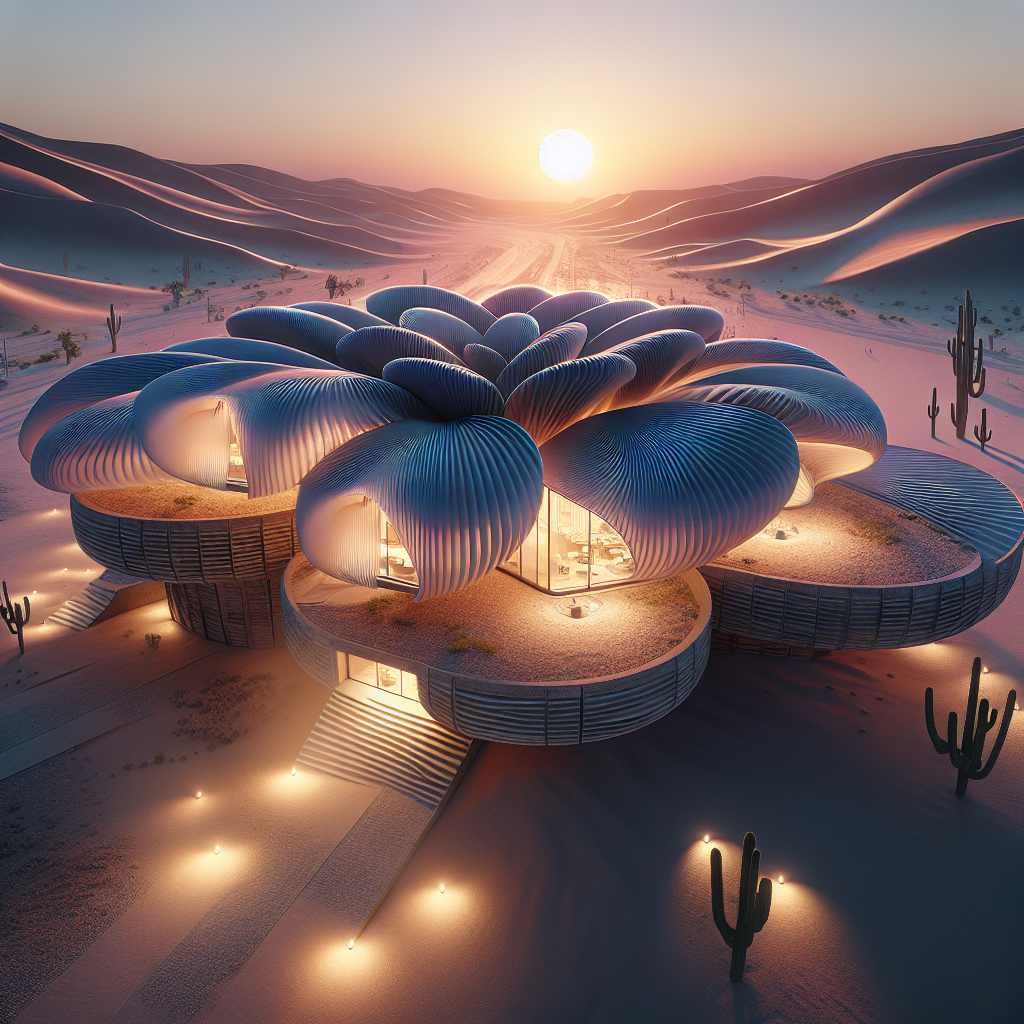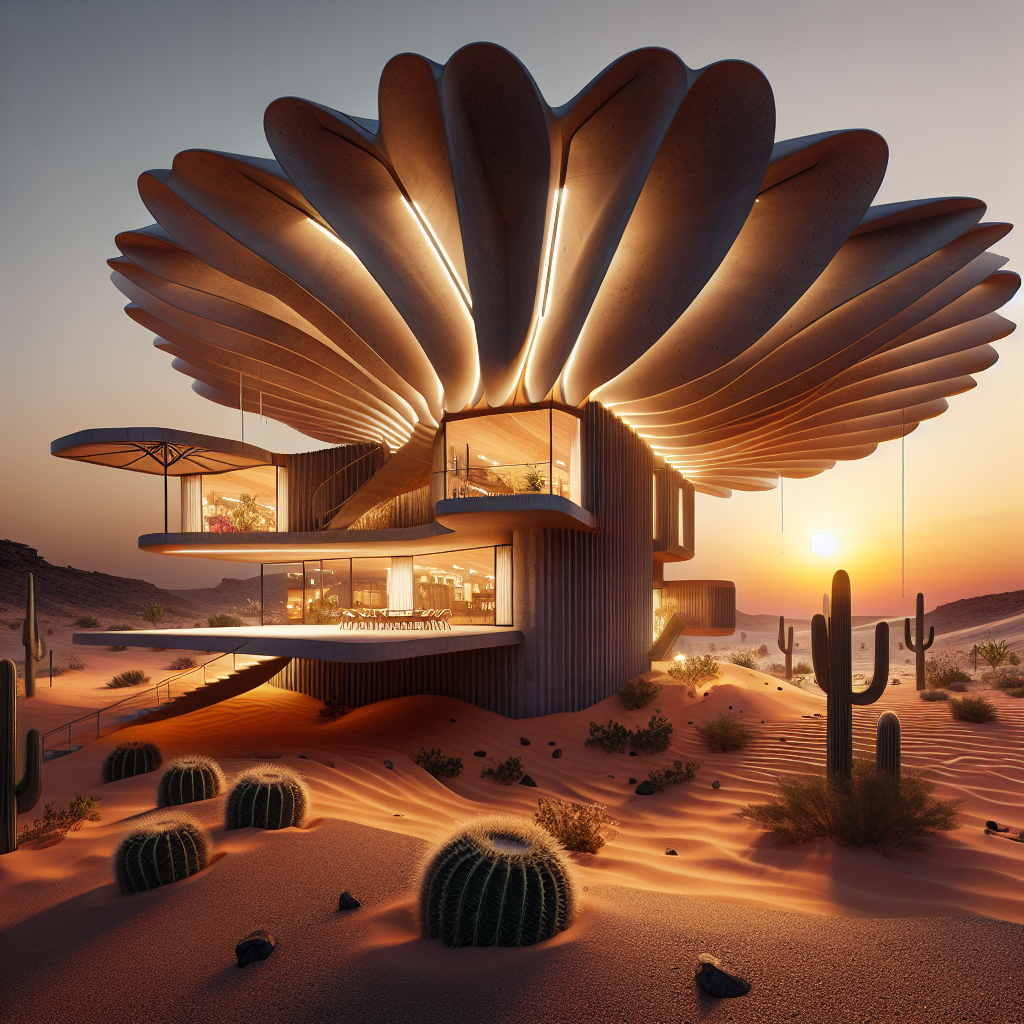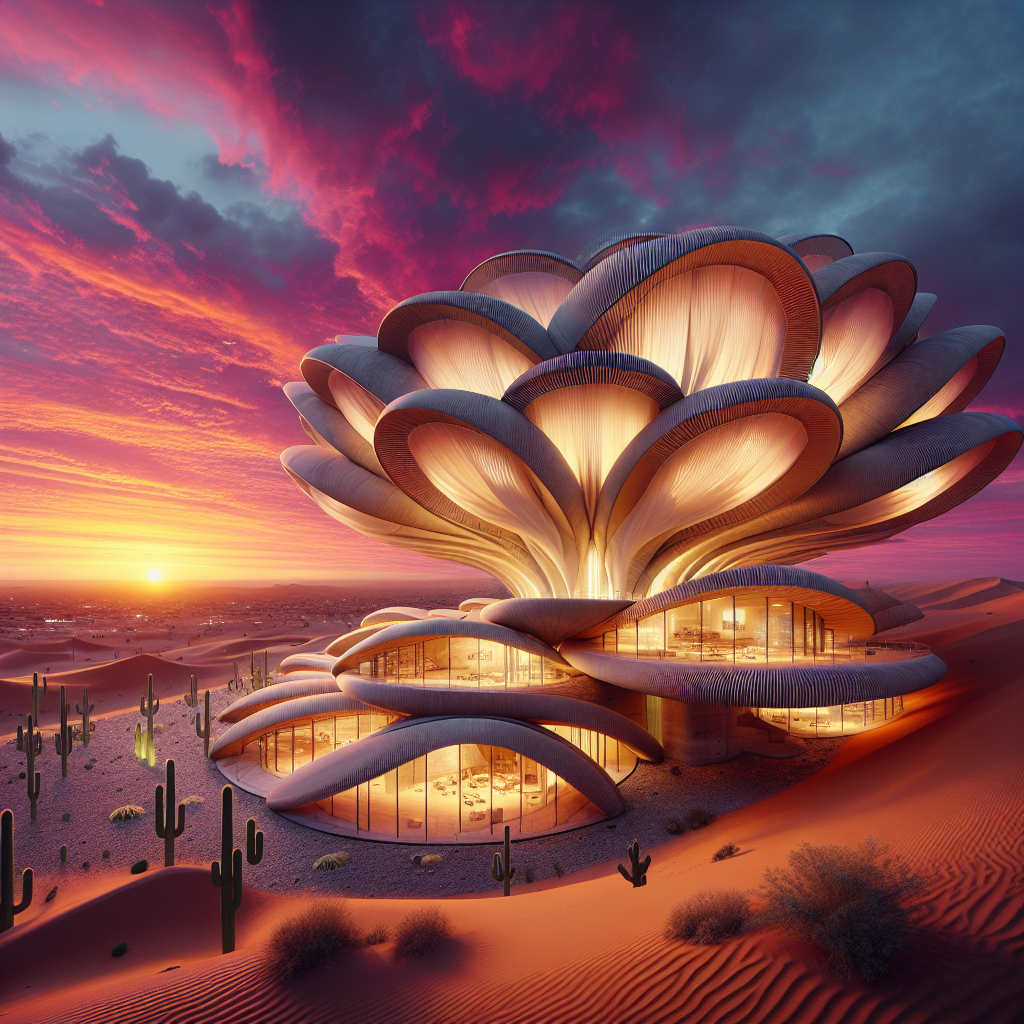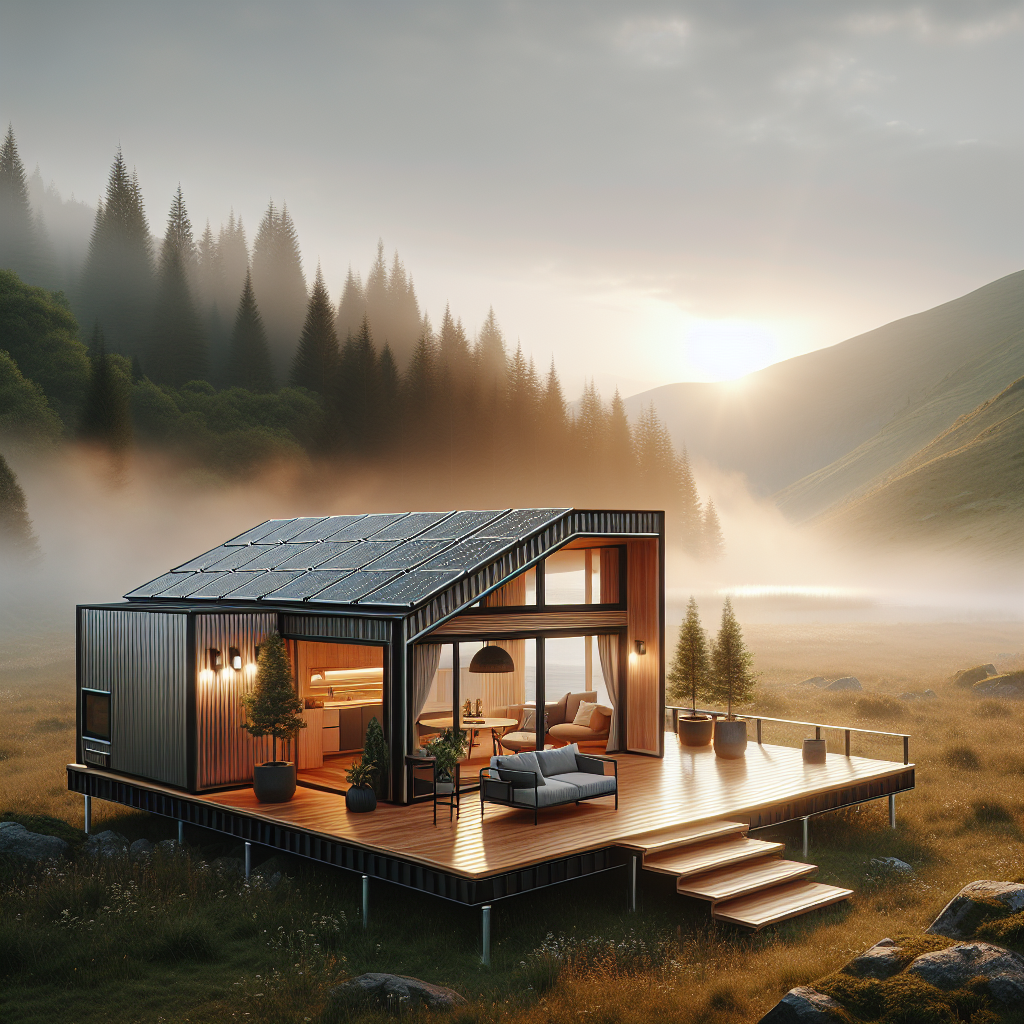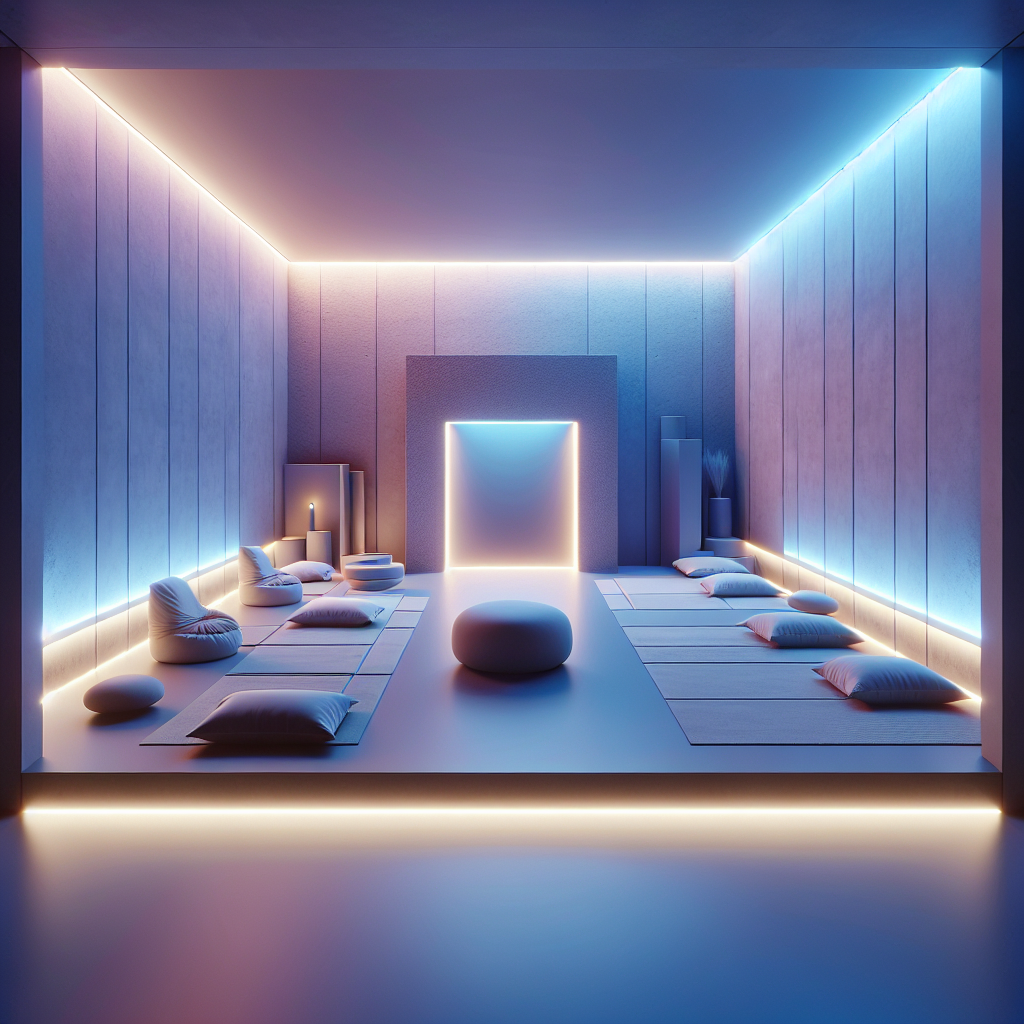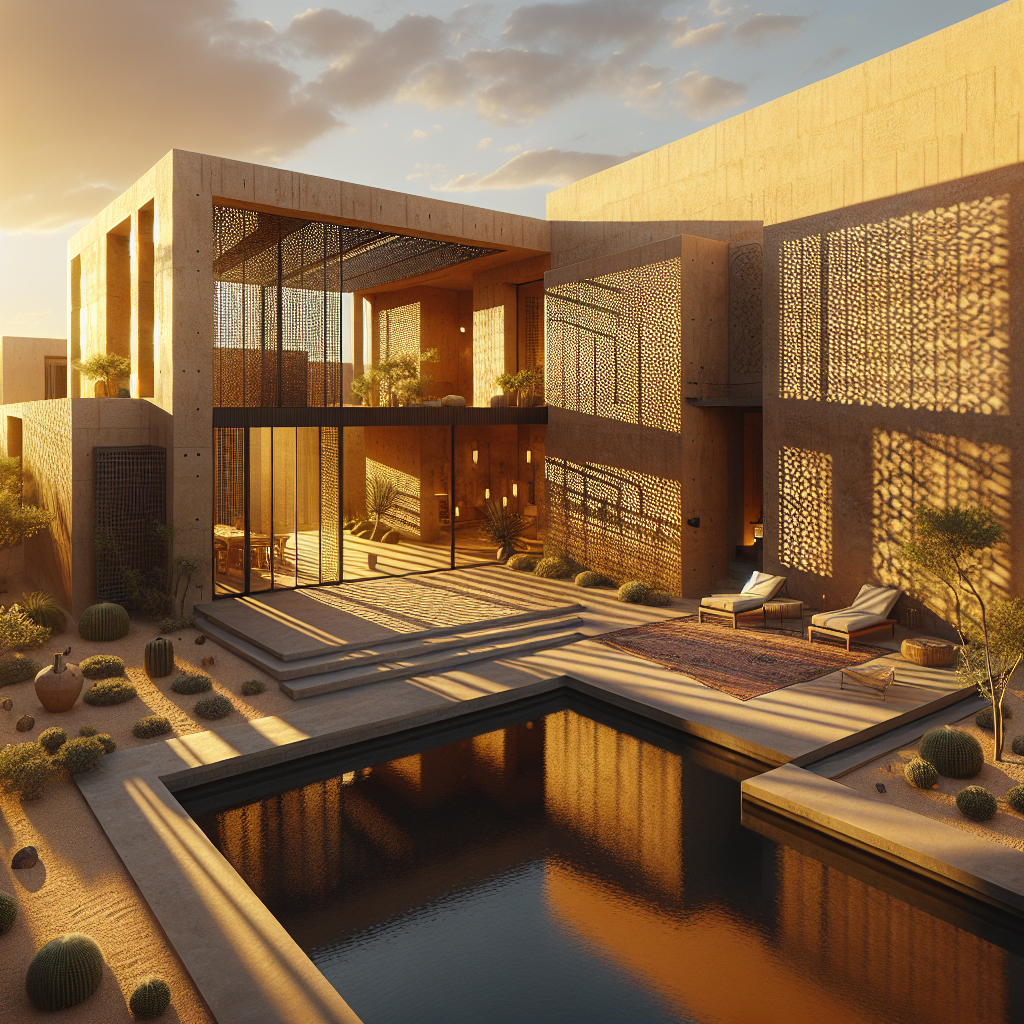Desert bloom expansions: residences that open like petals at sunset
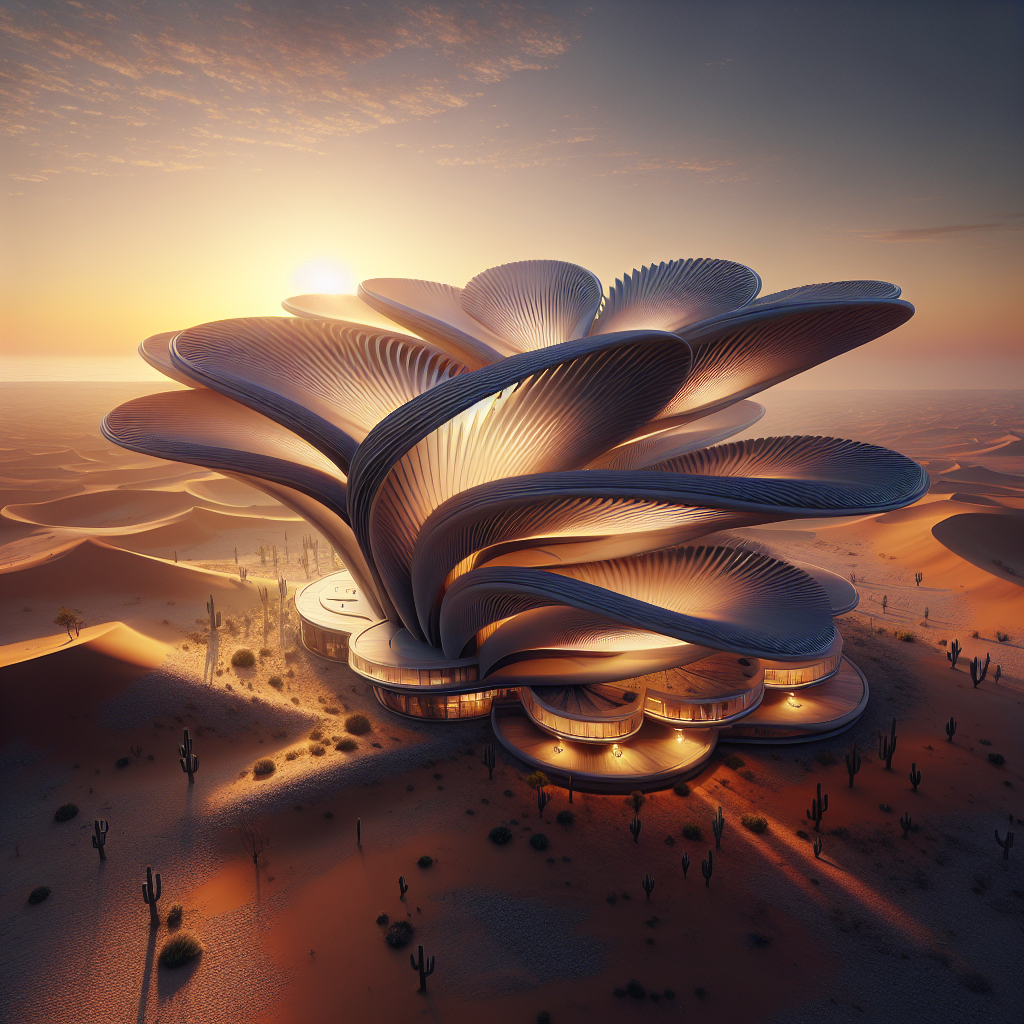
Desert Bloom Expansions: Residences That Open Like Petals at Sunset
In the world’s arid landscapes, where architecture has long been a dialogue between survival and beauty, a new typology is emerging: desert bloom residences. These are homes designed to unfold like petals at dusk, expanding outward in response to shifting temperatures, light, and human rhythms. More than a stylistic gesture, this movement reflects a convergence of biomimicry, kinetic architecture, and sustainable design, offering a poetic yet pragmatic response to life in extreme climates.
The Rise of Kinetic Desert Architecture
Architecture in desert regions has historically been about resilience—thick adobe walls, shaded courtyards, and narrow apertures that mitigate heat. Today, architects are reinterpreting these lessons with kinetic facades and retractable structures that transform in real time. Inspired by desert flora that bloom briefly at twilight, these homes are engineered to “open” as the sun sets, revealing terraces, shaded canopies, and ventilated interiors that harness the cool evening air.
This architectural language draws from biomimicry, where natural systems inspire human design. Just as a cactus flower unfurls to attract pollinators at night, these residences extend their living spaces when the desert becomes habitable. The result is a choreography of movement—walls sliding, roofs lifting, and panels pivoting—that transforms static buildings into living organisms.
Case Studies: Petal-Inspired Residences
One of the most striking examples is a private residence in the Sonoran Desert, designed by a Los Angeles-based studio. By day, the home appears as a compact, low-slung volume clad in rammed earth, its apertures tightly sealed against the sun. At sunset, mechanical louvers shaped like overlapping petals rotate outward, creating shaded verandas and funneling breezes through the interior. The transformation is not only functional but theatrical, offering residents a daily ritual of expansion that mirrors the desert’s own nocturnal bloom.
In the Middle East, a villa prototype in AlUla, Saudi Arabia, employs retractable tensile membranes inspired by Bedouin tents. At dusk, these membranes unfurl to form lightweight canopies, casting patterned shadows reminiscent of desert flora. The project resonates with the region’s cultural heritage while integrating cutting-edge responsive design technologies.
Technology Meets Tradition
These homes are not futuristic fantasies but grounded in both engineering and tradition. Architects are leveraging kinetic architecture systems—hydraulic arms, counterweights, and programmable shading devices—to enable fluid movement. At the same time, they draw from vernacular strategies: thick earthen walls for thermal mass, courtyards for passive cooling, and wind towers for natural ventilation.
Recent studies from the International Journal of Sustainable Built Environment highlight that adaptive facades can reduce cooling loads in desert climates by up to 40%. This aligns with the global push toward net-zero energy buildings, making desert bloom residences not only visually captivating but also environmentally strategic.
Materiality and Sensory Experience
Material choices play a critical role in the sensory richness of these homes. Rammed earth walls, with their striated textures, echo the desert’s layered geology. Polished concrete floors absorb the day’s warmth and release it at night, while perforated metal screens filter light into dappled patterns reminiscent of desert flora. At night, integrated LED systems illuminate the expanding “petals,” creating a glowing silhouette against the horizon.
Inside, interiors are designed as fluid extensions of the landscape. Movable partitions allow spaces to contract during the day and expand into open-air lounges at night. Furniture is often modular, reflecting the broader trend toward flexible design solutions. The result is a living environment that adapts to both climate and lifestyle, blurring the line between architecture and performance art.
Human-Centric Rituals of Expansion
Beyond technical innovation, what makes desert bloom residences compelling is their human-centric narrative. These homes encourage occupants to engage with natural cycles, reinforcing a sense of temporality often lost in climate-controlled environments. The daily ritual of watching a home unfold at sunset becomes a meditative act, reconnecting residents with the rhythms of the desert.
Designers are increasingly recognizing the psychological benefits of such biophilic gestures. Research in environmental psychology suggests that dynamic, nature-inspired spaces can reduce stress and enhance well-being. This aligns with the growing emphasis on biophilic design, which integrates natural patterns and processes into built environments.
Global Relevance and Future Directions
While rooted in desert contexts, the principles of petal-like expansion have broader applications. In temperate climates, similar systems could be adapted for seasonal flexibility—opening in summer for ventilation, closing in winter for insulation. In urban contexts, retractable facades could offer residents the luxury of outdoor living without sacrificing privacy or security.
As climate change intensifies, adaptive strategies like these will become increasingly vital. The desert bloom residence is not merely a stylistic experiment but a blueprint for resilient living in extreme environments. It embodies a shift from static architecture to responsive ecosystems, where buildings behave less like machines and more like organisms attuned to their surroundings.
A Poetic Future for Desert Living
What distinguishes desert bloom expansions is their capacity to merge pragmatism with poetry. They address the pressing demands of sustainability while offering an architectural spectacle that resonates with the soul. Watching a home open like a flower at sunset is not just an aesthetic pleasure—it is a reminder that architecture, at its best, is a living dialogue between people, place, and time.
As the boundaries between technology and nature continue to blur, these petal-like residences point toward a future where architecture does not dominate the desert but blooms with it, ephemeral yet enduring, resilient yet delicate. In their unfolding, they reveal not only new ways of living but also new ways of imagining the role of design in shaping human experience.
Keywords: desert bloom residences, kinetic architecture, responsive design, biophilic design, sustainable architecture, adaptive facades, desert living
